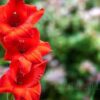**Protecting Orchids from Bacteria, Fungi, and Pest Threats**

Orchids, cherished for their exquisite beauty and delicate blooms, are vulnerable to various threats posed by bacteria, fungi, and pests. To safeguard these prized plants from disease and infestation, orchid enthusiasts employ a range of protective measures aimed at prevention, detection, and treatment. In this article, we explore effective strategies for protecting orchids against the menace of bacteria, fungi, and pest infestations, ensuring their health and vitality.
**1. Proper Hygiene Practices:**
Maintaining good hygiene practices is essential for preventing the spread of bacterial and fungal diseases among orchids. This includes regularly cleaning and disinfecting tools, pots, and growing surfaces to remove any potential sources of contamination. Avoiding overcrowding and ensuring adequate spacing between plants can also minimize the risk of disease transmission.
**2. Sterile Growing Medium:**
Using a sterile growing medium is crucial for preventing the introduction of harmful pathogens into orchid environments. Choose high-quality potting mixes that are free from contaminants and pathogens, or sterilize the growing medium before use to eliminate any existing threats. Additionally, consider using inorganic materials such as perlite or charcoal, which are less susceptible to fungal growth than organic substrates.
**3. Proper Watering Techniques:**
Overwatering can create conditions conducive to fungal growth and root rot in orchids. Implementing proper watering techniques, such as allowing the growing medium to dry out between waterings and avoiding waterlogged conditions, can help prevent moisture-related diseases. Water orchids in the morning to allow foliage to dry before nightfall, reducing the risk of fungal infections.
**4. Adequate Air Circulation:**
Ensuring adequate air circulation around orchid plants is essential for preventing fungal diseases and promoting overall plant health. Provide sufficient space between plants to allow for proper airflow, and avoid placing orchids in stagnant or poorly ventilated areas. Using fans or opening windows can improve air circulation and reduce humidity levels, minimizing the risk of fungal infections.
**5. Integrated Pest Management (IPM):**
Integrated Pest Management (IPM) is a holistic approach to pest control that emphasizes prevention, monitoring, and intervention strategies to manage pest populations effectively. Implementing IPM practices involves regularly inspecting orchids for signs of pest infestation, such as discolored leaves, distorted growth, or visible insects. Employ cultural controls, such as handpicking pests or introducing natural predators, before resorting to chemical pesticides.
**6. Quarantine Procedures:**
Implementing quarantine procedures for newly acquired orchids can prevent the introduction of pests and diseases into existing collections. Isolate new plants in a separate area for a period of observation before integrating them into the main collection. Monitor quarantined plants closely for any signs of pest activity or disease symptoms, and take appropriate action if problems arise.
**7. Disease Monitoring and Early Intervention:**
Regularly monitor orchids for signs of bacterial or fungal diseases, such as yellowing leaves, black spots, or wilting foliage. Early detection is crucial for implementing timely interventions to prevent the spread of disease. Remove and dispose of infected plant material promptly to prevent the spread of pathogens to healthy plants. Treat affected orchids with appropriate fungicides or bactericides following label instructions.
**8. Education and Training:**
Providing education and training to orchid enthusiasts on proper care and disease prevention techniques is essential for promoting orchid health and sustainability. Offer workshops, seminars, or online resources to educate growers on identifying common orchid pests and diseases, implementing preventive measures, and responding effectively to plant health issues.
In conclusion, protecting orchids from bacteria, fungi, and pest threats requires a proactive approach focused on prevention, detection, and intervention. By implementing proper hygiene practices, using sterile growing media, employing integrated pest management strategies, and monitoring orchids for signs of disease, enthusiasts can safeguard these cherished plants and ensure their long-term health and vitality. With careful attention and proactive management, orchids can thrive in a healthy and disease-free environment, delighting growers with their beauty and resilience.


